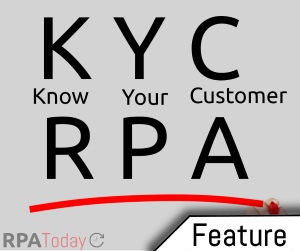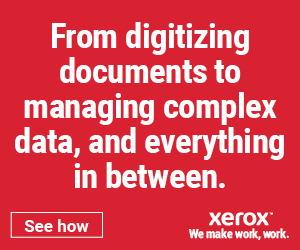
No industry is as rigorously regulated as banking and one of the most demanding areas of compliance for financial institutions is with the KYC requirements stemming from various anti-money laundering (AML) rules. While the vigilance of the financial system is an important weapon in the fight against global terrorism and organized crime, ensuring that vigilance has resulted in an evolving, increasingly complex panoply of rules that vary significantly by geography.
On average, financial institutions spend, according to Consult Hyperion, $60 million annually on KYC compliance, customer due diligence and client onboarding—the largest banks report spending up to $500 million a year. And those that don’t could be on the hook for even more. A report from client lifecycle management technology provider Fenergo found that, over the last ten years, various governments have levied AML- and KYC-related fines against banks totaling $26 billion. So, controlling the costs associated with KYC compliance is a primary concern for financial institutions and, increasingly, they are exploring robotic process automation (RPA) to make what is currently a heavily manual process more productive.
Onboarding and RPA
Typically, banks implement KYC procedures at two points in the customer management lifecycle: onboarding new customers and customer account maintenance.
In order to ensure that new customers and applicants are who they portray themselves to be, the various KYC requirements that exist in different federal, state and local regulatory regimes require that banks work diligently to establish a prospect’s true identity. This process traditionally has meant human workers manually collecting information on individuals and businesses—spending many hours scouring annual reports, company websites, third-party websites, industry registries, proxy statements and more to verify the legitimacy of businesses and the identities of their executives and/or officers. Many more hours are spent on the phone verifying the details unearthed by manual searches of those documents.
[um_loggedin]
It takes banks an average of 30 to 60 days to onboard a new client. And, analysts and back-office employees are not the only ones dedicated to this task. High-value salespeople are also spending significant chunks of their week on KYC. A recent report found nearly 60 percent of senior salespeople in banking spend more than 1.5 days of their week engaged in onboarding new clients. According to Stephan Wolf, CEO of GLEIF, the company that produced the report, the “research results show that the onboarding process for new business relationships in financial services is too time-consuming and requires too much administration.”
The work is tedious, costly, error-prone and requires employees to devote time that would be better spent on more valuable pursuits—growing the business, for instance.
RPA software automates many of the KYC tasks in the onboarding process that currently are performed manually by financial institutions in less time and with greater accuracy. For onboarding, robots can be used to create and update lists of data requirements, scrape third-party websites for listing and regulatory information, find and extract pertinent information like executive identities and ultimate beneficial ownership information from annual reports and proxy statements, and more. RPA software also can automate account set-up after a new customer’s identity has been verified, saving tens of thousands of dollars and thousands of hours a year.
Automating Ongoing KYC
As back-office denizens are all too aware, KYC compliance does not end when customers have been successfully onboarded. Regulations require banks to monitor accounts and the transactions that flow through them on an ongoing basis to guard against them being used to launder money and fund illegal activities.
Banks are required to review accounts periodically, performing fresh due diligence, flagging and analyzing change events and screening for any sanctions that have been imposed on the customer. RPA robots can also automate the process of screening documents, legal proceedings, address changes and other data that could indicate crime or terrorism, streamlining a complex process.
KYC an Automation Natural
The notion of automating processes is not a new one for financial institutions. And, the industry was among the first to undertake RPA implementations on a large scale. But, many institutions still are either clinging to manual processes out of inertia or are already on their automation journey but have not turned their attention to KYC.
While many areas of a bank’s operation are ripe for RPA, the need in KYC is among the most critical and financial institutions that have not identified it as an automation target should prioritize the function as soon as possible.
[/um_loggedin]
[um_loggedout]
[/um_loggedout]


